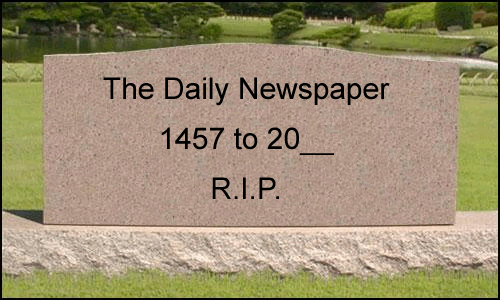 The new millennium is definitely the age of citizen journalism and free speech. Instead of relying on the big names of the media, individuals are taking charge and broadcasting their own ideas. In the age of information and technology, people are equipped with more tools to share their ideas with the world. Bloggers don’t wait to be published in the newspaper, Youtube fans don’t wait to be aired on T.V., and now podcasters are doing their own radio shows.
The new millennium is definitely the age of citizen journalism and free speech. Instead of relying on the big names of the media, individuals are taking charge and broadcasting their own ideas. In the age of information and technology, people are equipped with more tools to share their ideas with the world. Bloggers don’t wait to be published in the newspaper, Youtube fans don’t wait to be aired on T.V., and now podcasters are doing their own radio shows.Podcasting is a relatively new creation. The technology was there, but podcasting did not surface until 2004 when the Apple IPod became popular and songs were sent to users’ music players via the internet. This came to be known as “podcasting,” a combination of “IPod” and “broadcasting.” A person can subscribe to a certain podcaster (such as ITunes) and receive audio files when the podcaster provides them. Podcasts come in an RSS feed that are read by a podcatcher, a computer program that translates podcasts into accessible MP3 audio formats. One website simplified the process: in order to create a podcast you must create an audio file, “add the audio file to an RSS 2.0 feed,” and then “tell the world about your podcast.”
Podcasting has expanded since the first IPod. Innovators realized that podcasting could do more than allow music lovers to download songs. Podcasts could distribute information and allow people to broadcast their opinions to the world. Today, there’s a podcast for just about everything from celebrity interviews to information about diabetes. Common podcasts include informational content, audio instruction manuals, news stories and commentaries, talk shows, and storytelling for children and the vision impaired. Many podcasts cater to a certain group of people such as vegetarians who tune in to hear the latest recipes, religious groups who want to learn more about their faith, or baseball fans who want information about all their favorite players.
Anyone can podcast. Big news names such as MSNBC and ABC have their own professional news podcasts, but you can also listen to high school freshmen debating which Family Guy episode was the funniest of all time. Podcasts not only let people listen to a variety of subjects, they let computer users listen to a variety of people. This lets people who don’t have the “radio voice” be able to share their opinions with the everyone. Podcasting does a lot for citizen journalism and free speech because anyone can broadcast their actual voice to anyone who’ll listen.

Although broadcast radio is the medium being gate jumped by this new technology, podcasts can never replace the convenience of the radio. Podcasts can be played on portable MP3 players, but since they need to be downloaded first, radio is still the choice medium for music and talk radio anywhere anytime. People are still going to listen to the radio on their way home from work. Podcasts can be beneficial to the radio industry. When a particular podcaster gains popularity online, radio stations can gain listeners by putting that particular individual on the air. So, although news websites are causing newspapers to fall, podcasts and the radio can exist peacefully.





 It is a Photoshopped picture of a woman, a computer generated piece of artwork. We know that no real person looks like this. The image is altered. We should think the same things when we see a photo such as this:
It is a Photoshopped picture of a woman, a computer generated piece of artwork. We know that no real person looks like this. The image is altered. We should think the same things when we see a photo such as this:  If you still don’t believe that most models have the same “imperfections” that we do, check out this website:
If you still don’t believe that most models have the same “imperfections” that we do, check out this website: 






